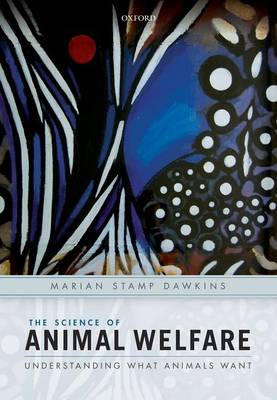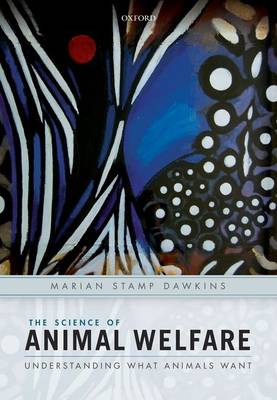
En raison d'une grêve chez bpost, votre commande pourrait être retardée. Vous avez besoin d’un livre rapidement ? Nos magasins vous accueillent à bras ouverts !
- Retrait gratuit dans votre magasin Club
- 7.000.000 titres dans notre catalogue
- Payer en toute sécurité
- Toujours un magasin près de chez vous
En raison de la grêve chez bpost, votre commande pourrait être retardée. Vous avez besoin d’un livre rapidement ? Nos magasins vous accueillent à bras ouverts !
- Retrait gratuit dans votre magasin Club
- 7.000.0000 titres dans notre catalogue
- Payer en toute sécurité
- Toujours un magasin près de chez vous
The Science of Animal Welfare
Understanding What Animals Want
Marian Stamp Dawkins
Livre relié | Anglais
151,45 €
+ 302 points
Format
Description
What is animal welfare? Why has it proved so difficult to find a definition that everyone can agree on? This concise and accessible guide is for anyone who is interested in animals and who has wondered how we can assess their welfare scientifically. It defines animal welfare as 'health and animals having what they want', a definition that can be easily understood by scientists and non-scientists alike, expresses in simple words what underlies many existing definitions, and shows what evidence we need to collect to improve animal welfare in practice. Above all, it puts the animal's own point of view at the heart of an assessment of its welfare. But, can we really understand what animals want? A consistent theme running through the book is that not only is it possible to establish what animals want, but that this information is vital in helping us to make sense of the long and often confusing list of welfare measures that are now in use such as 'stress' and 'feel good hormones', expressive sounds and gestures, natural behaviour, cognitive bias, and stereotypies. Defining welfare as 'health and what animals want' allows us to distinguish between measures that are simply what an animal does when it is alert, aroused, or active and those measures that genuinely allow us to distinguish between situations the animals themselves see as positive or negative. Sentience (conscious feelings of pleasure, pain, and suffering) is for many people the essence of what is meant by welfare, but studying consciousness is notoriously difficult, particularly in non-human species. These difficulties are discussed in the context of our current - and as yet incomplete - knowledge of human and animal consciousness. Finally, the book highlights some key ideas in the relationship between animal welfare science and animal ethics and shows how closely the well-being of humans is linked to that of other animals. The Science of Animal Welfare is an ideal companion for undergraduate and graduate students taking courses in animal behaviour and welfare, as well as for professional researchers, practitioners and animal welfare consultants. At the same time, it is easily understandable to non-scientists and anyone without prior knowledge but with an interest in animals and the rapidly evolving science of animal welfare.
Spécifications
Parties prenantes
- Auteur(s) :
- Editeur:
Contenu
- Nombre de pages :
- 160
- Langue:
- Anglais
Caractéristiques
- EAN:
- 9780198848981
- Date de parution :
- 28-03-21
- Format:
- Livre relié
- Format numérique:
- Genaaid
- Dimensions :
- 175 mm x 251 mm
- Poids :
- 476 g

Les avis
Nous publions uniquement les avis qui respectent les conditions requises. Consultez nos conditions pour les avis.






